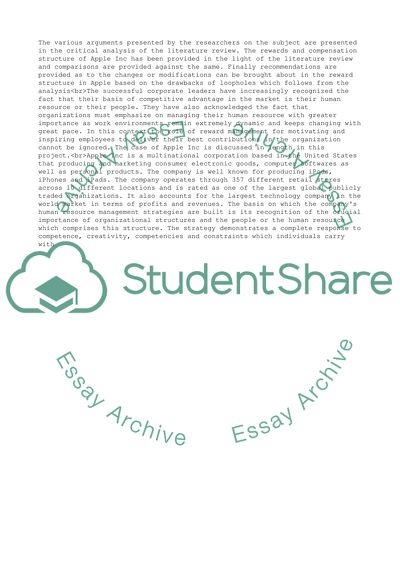Cite this document
(Rewards Managemnet of Apple Inc Essay Example | Topics and Well Written Essays - 2000 words - 1, n.d.)
Rewards Managemnet of Apple Inc Essay Example | Topics and Well Written Essays - 2000 words - 1. https://studentshare.org/human-resources/1763873-rewards-managemnet-of-apple-inc
Rewards Managemnet of Apple Inc Essay Example | Topics and Well Written Essays - 2000 words - 1. https://studentshare.org/human-resources/1763873-rewards-managemnet-of-apple-inc
(Rewards Managemnet of Apple Inc Essay Example | Topics and Well Written Essays - 2000 Words - 1)
Rewards Managemnet of Apple Inc Essay Example | Topics and Well Written Essays - 2000 Words - 1. https://studentshare.org/human-resources/1763873-rewards-managemnet-of-apple-inc.
Rewards Managemnet of Apple Inc Essay Example | Topics and Well Written Essays - 2000 Words - 1. https://studentshare.org/human-resources/1763873-rewards-managemnet-of-apple-inc.
“Rewards Managemnet of Apple Inc Essay Example | Topics and Well Written Essays - 2000 Words - 1”. https://studentshare.org/human-resources/1763873-rewards-managemnet-of-apple-inc.


